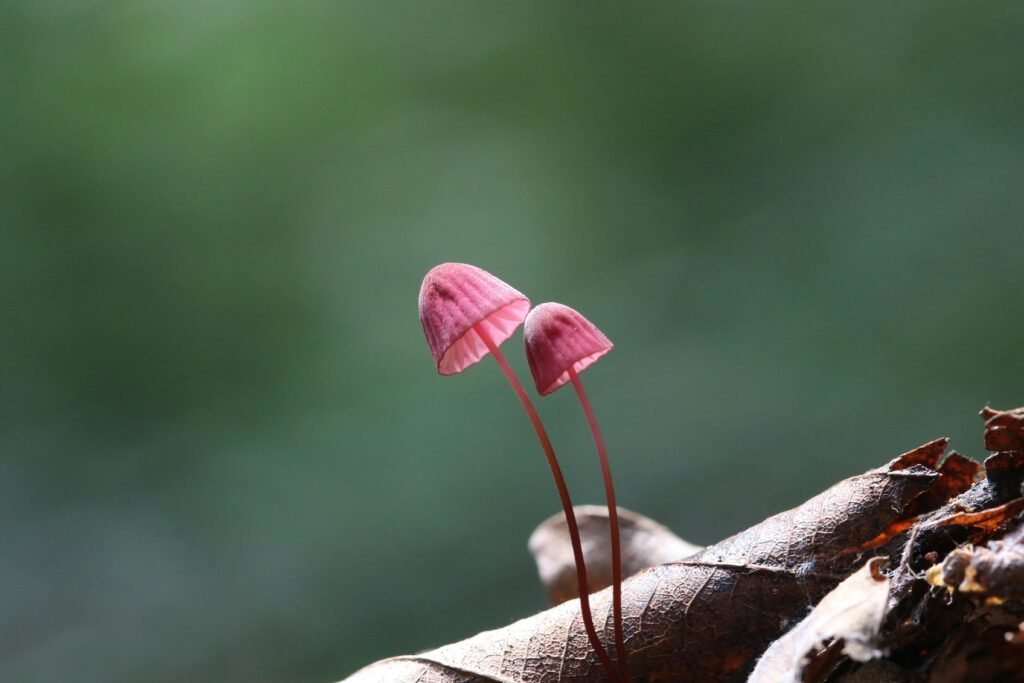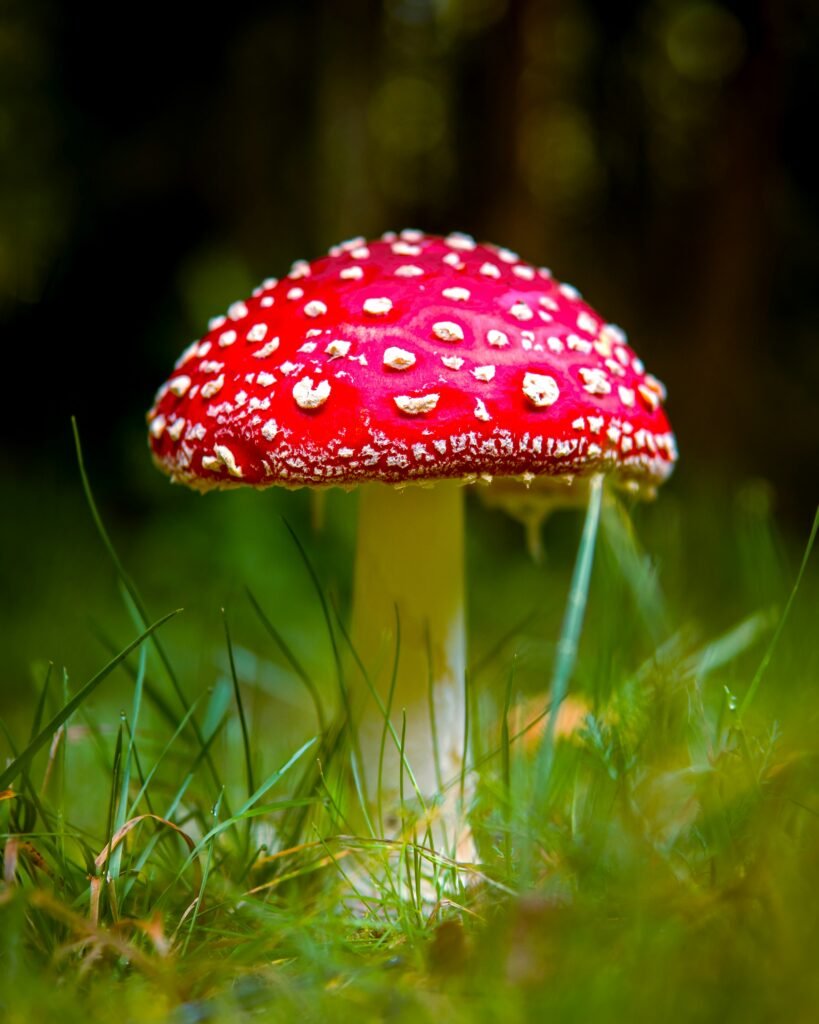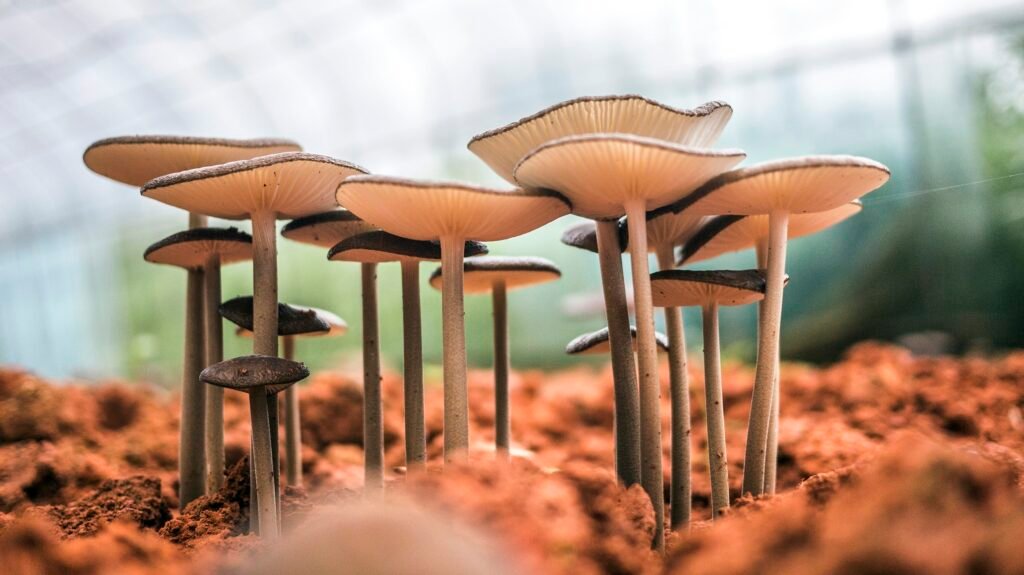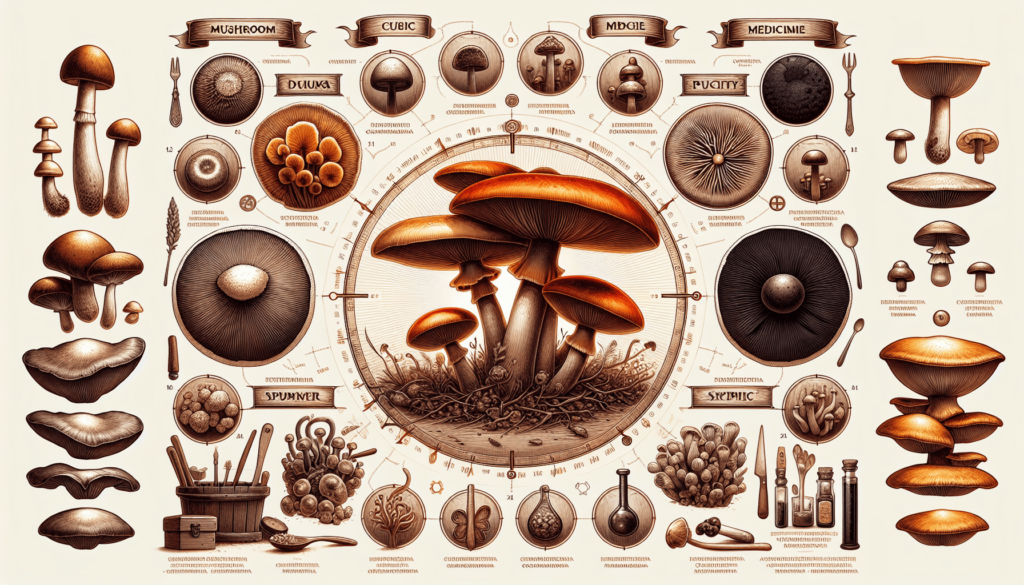Have you ever wondered about the different types of mushrooms out there? In this article, we will explore and discuss the four main types of mushrooms. From the commonly known white button mushroom to the exotic shiitake and portobello varieties, we’ll take you on a journey into the fascinating world of fungi. Whether you’re a mushroom enthusiast or simply curious, this article will provide you with an overview of the various types of mushrooms that can add flavor and depth to your culinary repertoire. So, let’s dive in and discover the incredible diversity of mushrooms!
Agaricus Mushrooms
Description
Agaricus mushrooms, also known as button mushrooms, are one of the most commonly consumed types of mushrooms worldwide. They have a rounded shape with a creamy white color and a mild, earthy flavor. The caps of agaricus mushrooms can range in size from small to large, and they have distinct gills on the underside.
Features
One of the notable features of agaricus mushrooms is their versatility. They can be enjoyed raw in salads, sliced and sautéed, or included in various dishes, such as soups, stir-fries, and pasta sauces. Another feature is their compact texture, which remains firm even after cooking, making them an excellent choice for various culinary preparations.
Cultivation
Agaricus mushrooms are commercially cultivated in controlled environments, where temperature, humidity, and light conditions are carefully regulated. They are typically grown on composted substrates, such as straw or manure, and require specific growing conditions to thrive. The cultivation process involves mycelium propagation, spawning, casing, and harvesting, which can take several weeks from start to finish.
Common Varieties
Some common varieties of agaricus mushrooms include white button mushrooms, crimini mushrooms, and portobello mushrooms. White button mushrooms are the youngest and have a mild flavor. Crimini mushrooms are more mature and have a deeper, earthier taste. Portobello mushrooms are the largest and possess a rich, meaty flavor that makes them popular as a vegetarian alternative to burgers.
Uses
Agaricus mushrooms offer a wide range of culinary possibilities. They can be used as a topping on pizzas, incorporated into omelettes, or grilled on the barbecue. Their mild flavor allows them to complement and enhance the taste of other ingredients in a dish without overpowering them. Additionally, agaricus mushrooms are a great source of nutrients, including vitamins B and D, minerals, and dietary fiber, making them a healthy addition to any diet.

Boletus Mushrooms
Description
Boletus mushrooms, commonly known as boletes, are a diverse group of mushrooms found in various habitats around the world. Unlike agaricus mushrooms, boletus mushrooms have a distinctive cap and stem structure, with a porous underside instead of gills. They come in a range of colors, including yellow, brown, and red, and have a unique, nutty flavor.
Features
One of the distinctive features of boletus mushrooms is their mycorrhizal association with trees. They form a symbiotic relationship with certain tree species, with their mycelium intertwining with the tree roots underground. This relationship benefits both the mushrooms and the trees, as it allows the exchange of nutrients and helps support the ecosystem’s balance.
Cultivation
Cultivating boletus mushrooms can be more challenging compared to agaricus mushrooms due to their mycorrhizal nature. It requires a deep understanding of specific tree species, soil conditions, and the fungal ecology involved. Thus, most boletus mushrooms are harvested from the wild rather than commercially cultivated.
Common Varieties
Boletus mushrooms encompass many species, each with its own unique characteristics. Some popular varieties include porcini mushrooms (Boletus edulis), with their rich, earthy flavor and firm texture, and the red-capped boletus (Boletus rubriceps), known for its bright red cap and peppery taste. Each variety has its own distinct culinary uses and is highly sought after by mushroom enthusiasts around the world.
Uses
Due to their robust flavor and texture, boletus mushrooms are highly valued in culinary pursuits. They can be sautéed, grilled, or roasted to enhance their natural earthiness. Boletus mushrooms are often used in soups, stews, risottos, and sauces, where their distinctive taste can elevate the overall flavor profile of the dish. Additionally, wild-harvested boletus mushrooms are considered a delicacy in many cuisines, often commanding high prices in specialty markets.

Chanterelle Mushrooms
Description
Chanterelle mushrooms are known for their vibrant yellow to orange color and trumpet-like shape. They have a fruity, apricot-like aroma and a delicate, slightly peppery flavor. Chanterelles are typically found in forests, particularly in areas with coniferous or deciduous trees, and flourish in moist conditions.
Features
One of the key features of chanterelle mushrooms is their unique appearance, which sets them apart from other mushroom varieties. Their distinct color and shape make them easily recognizable and a popular choice for both culinary and visual purposes. Additionally, chanterelles have a flesh that is firm yet tender, contributing to their desirability in cooking.
Cultivation
While it is possible to cultivate chanterelle mushrooms, it remains a challenging endeavor. Chanterelles have intricate ecological relationships with certain tree species and mycorrhizal fungi, which are essential for their growth and development. As a result, most commercially available chanterelles are wild-harvested, often requiring expert foragers to locate and collect them.
Common Varieties
Several species of chanterelle mushrooms exist, with some variations in color, size, and taste. The golden chanterelle (Cantharellus cibarius) is the most well-known variety, prized for its robust flavor and vibrant color. The black trumpet chanterelle (Craterellus cornucopioides) has a trumpet-shaped cap, with a rich, smoky taste that adds depth to dishes.
Uses
Chanterelle mushrooms have a delicate flavor that pairs well with a variety of ingredients. They can be sautéed with butter and garlic, added to pasta dishes, or used as a topping for pizzas and bruschetta. Chanterelles are often incorporated into creamy sauces, risottos, and even desserts, such as tarts and cakes. Their exquisite color and texture also make them a visually appealing addition to culinary creations.

Truffle Mushrooms
Description
Truffle mushrooms are widely regarded as the pinnacle of culinary luxury. These subterranean fungi grow underground, forming a symbiotic relationship with specific tree roots, particularly oaks and hazelnuts. Truffles have a strong, earthy aroma and an intense, complex flavor that is often described as nutty, garlicky, or even chocolaty.
Features
The unique feature of truffle mushrooms lies in their elusive growth habit. They require specific soil conditions, as well as a delicate balance of temperature, moisture, and pH levels, which contribute to their scarcity and high value. The distinct aroma emitted by truffles, reminiscent of the forest floor, is what truly sets them apart from other mushroom varieties.
Cultivation
While truffles can be cultivated, their cultivation is an intricate and lengthy process that requires considerable expertise. Truffle orchards are established by planting truffle-inoculated tree seedlings and providing optimal environmental conditions. It can take several years, often up to a decade or more, for the first truffles to be harvested from the orchards. As a result, most truffles are still harvested from the wild.
Common Varieties
There are several types of truffle mushrooms, each with its own distinct characteristics. The most esteemed variety is the black truffle (Tuber melanosporum), known for its rich flavor and aroma. White truffles (Tuber magnatum) are another highly prized variety, often considered the most luxurious and expensive. Other types include the summer truffle (Tuber aestivum) and the burgundy truffle (Tuber uncinatum).
Uses
Truffles are considered culinary treasures, often used sparingly due to their high price and powerful flavor. They are primarily used as a finishing ingredient, shaved or grated onto dishes to impart their unique aroma and taste. Truffles can be added to pasta, risottos, scrambled eggs, and even desserts for a touch of decadence. They are also commonly used in the production of truffle-infused oils, butters, and condiments, which allow for a more accessible way to enjoy their distinctive essence.
In conclusion, the world of mushrooms offers a diverse array of flavors, textures, and culinary possibilities. From the versatile agaricus mushrooms to the elusive truffles, each type brings its own unique characteristics that make them a delight for both novice and seasoned food enthusiasts. Whether enjoyed in simple preparations or in complex dishes, mushrooms add depth and richness to any culinary creation. So go ahead and explore the fascinating world of mushrooms – you won’t be disappointed!

